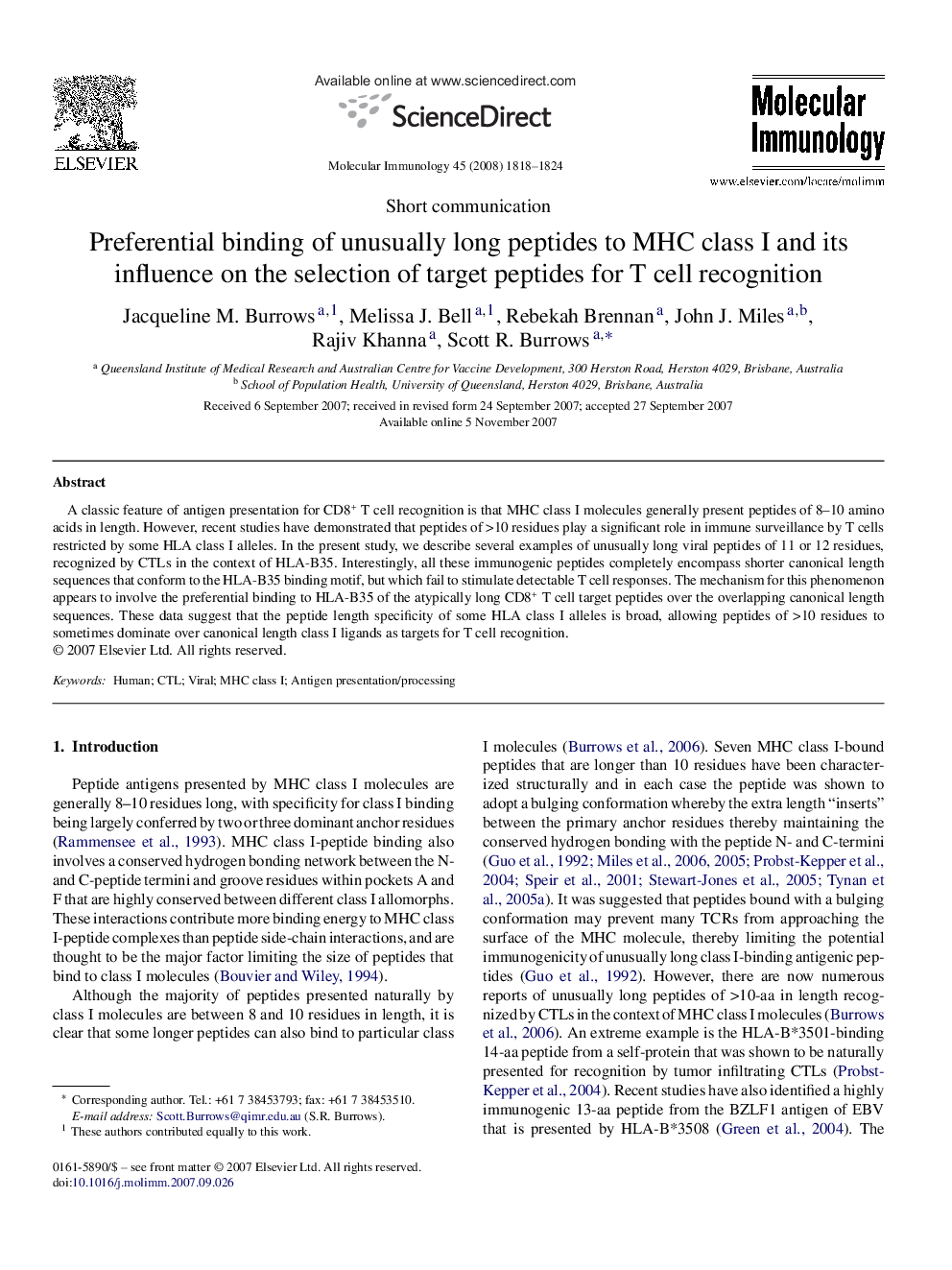| Article ID | Journal | Published Year | Pages | File Type |
|---|---|---|---|---|
| 2832121 | Molecular Immunology | 2008 | 7 Pages |
A classic feature of antigen presentation for CD8+ T cell recognition is that MHC class I molecules generally present peptides of 8–10 amino acids in length. However, recent studies have demonstrated that peptides of >10 residues play a significant role in immune surveillance by T cells restricted by some HLA class I alleles. In the present study, we describe several examples of unusually long viral peptides of 11 or 12 residues, recognized by CTLs in the context of HLA-B35. Interestingly, all these immunogenic peptides completely encompass shorter canonical length sequences that conform to the HLA-B35 binding motif, but which fail to stimulate detectable T cell responses. The mechanism for this phenomenon appears to involve the preferential binding to HLA-B35 of the atypically long CD8+ T cell target peptides over the overlapping canonical length sequences. These data suggest that the peptide length specificity of some HLA class I alleles is broad, allowing peptides of >10 residues to sometimes dominate over canonical length class I ligands as targets for T cell recognition.
